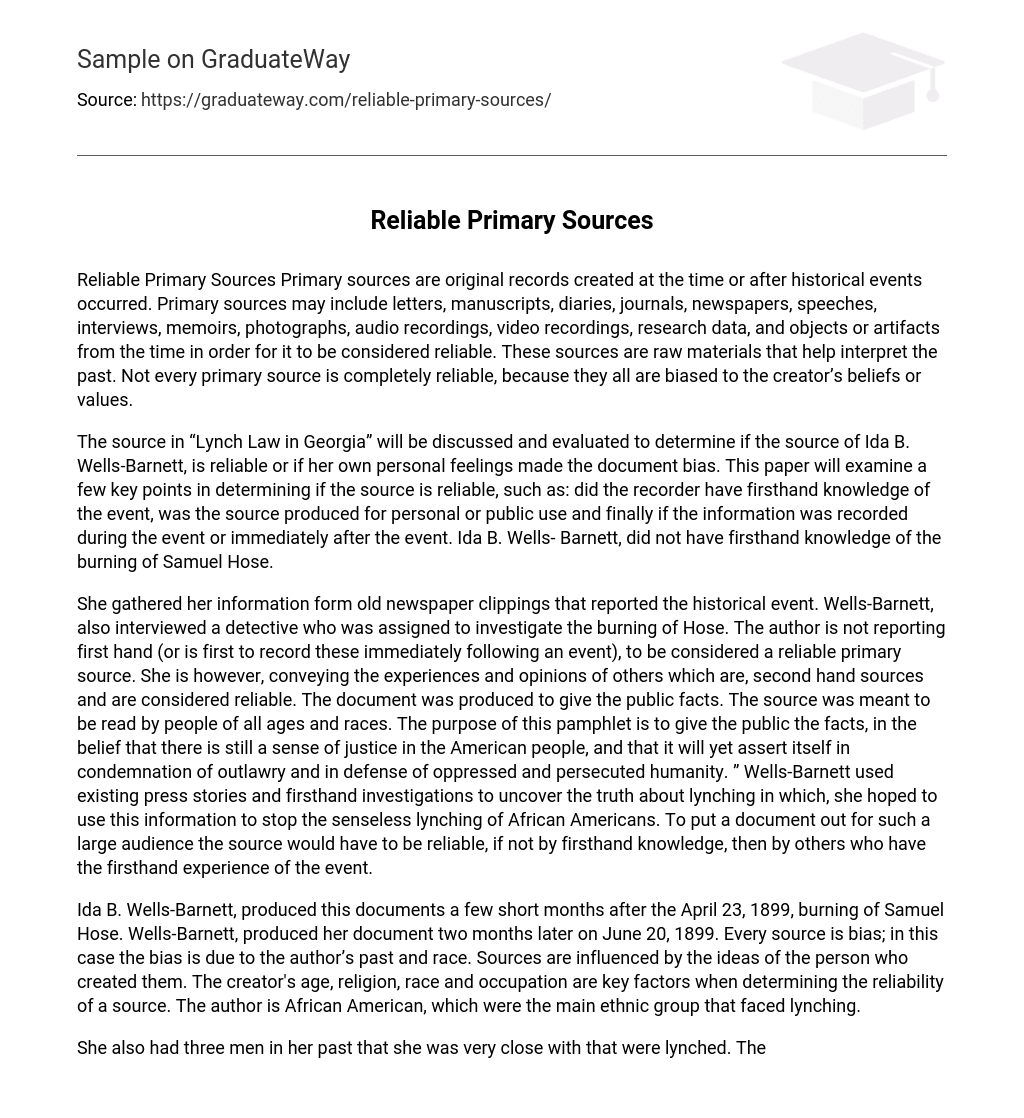Primary sources are genuine records that were made during or after historical events. They encompass a range of materials like letters, manuscripts, diaries, journals, newspapers, speeches, interviews, memoirs, photographs, audio recordings, video recordings, research data and objects/artifacts from the relevant era. While these sources are generally deemed trustworthy, they may not always be completely unbiased as they can mirror the perspectives and convictions of their creators.
The reliability of the source “Lynch Law in Georgia” by Ida B. Wells-Barnett will be discussed and evaluated, taking into consideration the influence of her personal feelings on the document’s bias. This paper will analyze several key factors in determining the source’s reliability, including whether the recorder had firsthand knowledge of the event, the purpose of the source (personal or public use), and whether the information was recorded during or immediately after the event. It is important to note that Ida B. Wells-Barnett did not have firsthand knowledge of the burning of Samuel Hose.
She collected information from old newspaper clippings that documented the historical event. Wells-Barnett also conducted an interview with a detective who was assigned to investigate the burning of Hose. Although the author is not reporting firsthand or immediately following the event, her account can still be considered a reliable primary source. Primarily, she conveys the experiences and opinions of others, which are secondhand sources but still deemed reliable.
The purpose of this pamphlet is to provide the public with factual information, accessible to people of all ages and races. It believes in justice within the American people, aiming to condemn outlawry and protect oppressed and persecuted individuals.
Wells-Barnett used press reports and her own investigations to uncover the truth about lynching. She aimed to stop the unfair targeting and murder of African Americans by sharing this information. To ensure a wide audience, it was vital for the information source to be credible, whether through firsthand knowledge or accounts from those who directly experienced these events.
Ida B. Wells-Barnett created this document a couple of months following the burning of Samuel Hose on April 23, 1899. The document was produced by Wells-Barnett herself on June 20, 1899. All sources possess bias, and in this instance, the bias stems from the author’s personal history and racial background. The ideas of the creator heavily influence the sources they produce, with factors such as age, religion, race, and occupation playing a significant role in determining the reliability of a source.
The author, an African American, belonged to the ethnic group that primarily experienced lynching. She had three significant individuals from her past who were also victims of lynching and had a close relationship with them. Although these personal connections may introduce biases, the source remains reliable as it draws upon firsthand accounts such as newspapers and investigation reports.
This document aims to inform the public about lynching and advocate for its abolition. It was created within two months of the event, making it a credible source.





